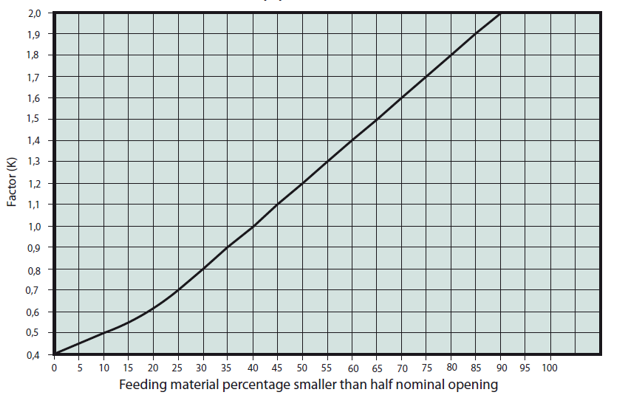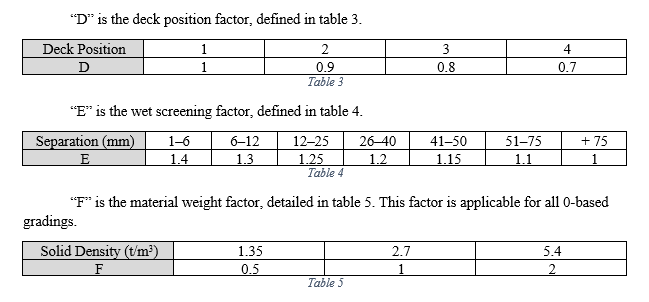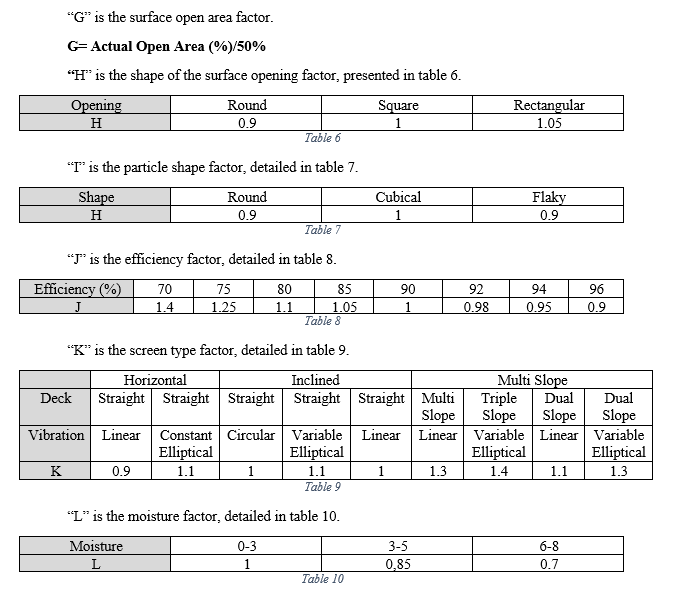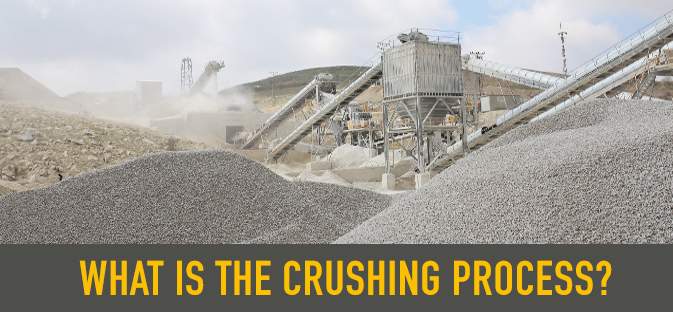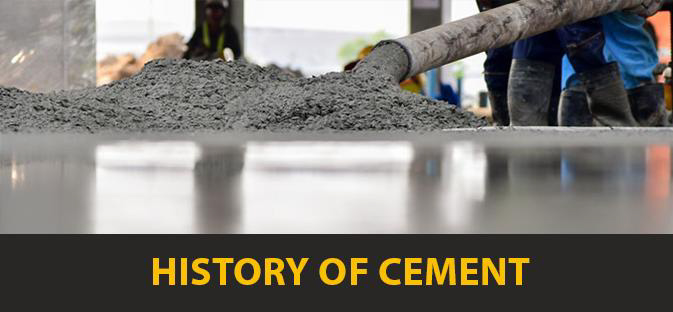Vibrating Screen Capacity Calculations
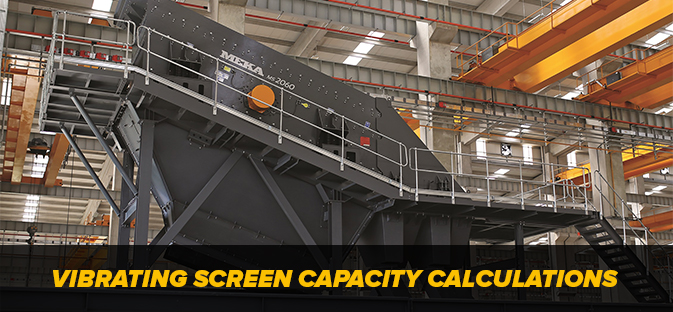
Flow Rate
To calculate the optimum flow rate value of the screen, the dimensions of screen and the particle velocities need to be calculated. First, particle velocity is going to be calculated based on the Italvibras© method, after which the width of the screen is going to be calculated with respect to material velocity. Material velocity is calculated in two different ways for the two different vibration types. Firstly, the unidirectional method is going to be explained for a linear vibration, followed by the rotational method for a circular vibration.
Unidirectional Method
The material velocity of linearly vibrated screens can be obtained from the diagrams contained in appendix A-1.
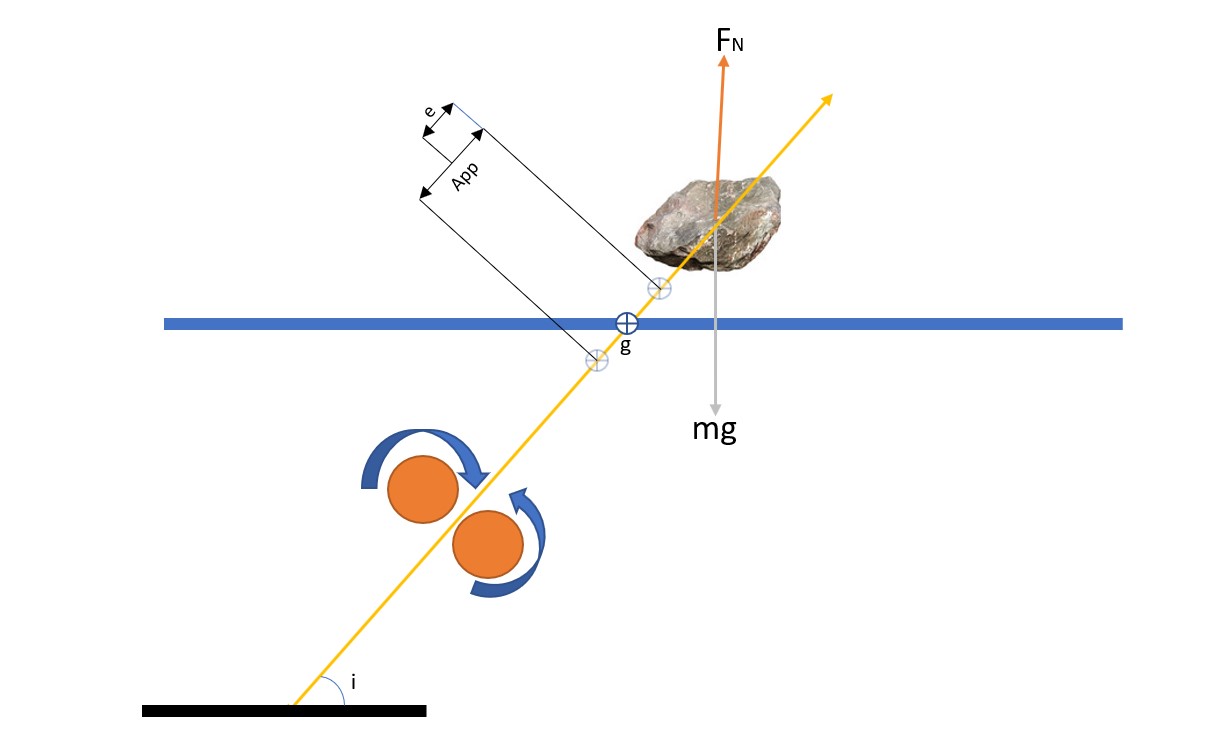
e = eccentricity (mm)
App = peak-to-peak (mm) = 2 x e
Example: Determine the material velocity of a screen that is vibrated at 900 RPM with a 12 mm stroke and a 40° degree incidence angle.
Solution: As shown in the diagram below, the material velocity was found to be 975 m/h.
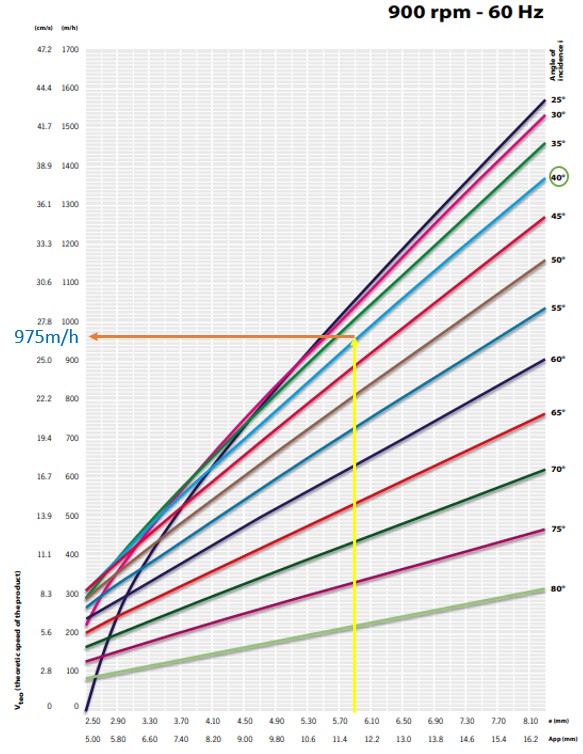
Unidirectional Method
The material velocity of a circular vibrating screen can be calculated from the corrected theoretical speed of the product formula written below.
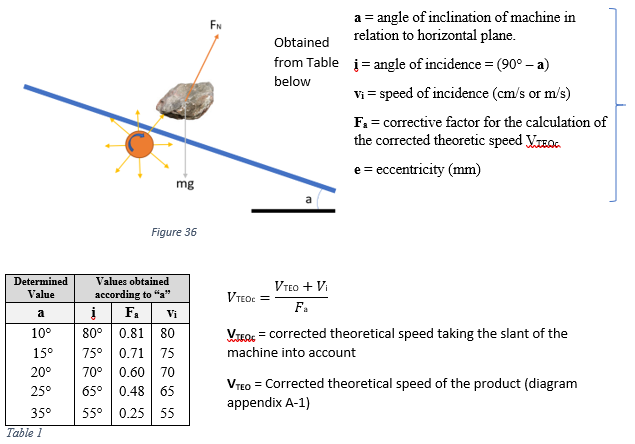
Example: Determine the material velocity of a screen vibrated at 900 RPM with a 12 mm stroke and 20° degree inclination angle.
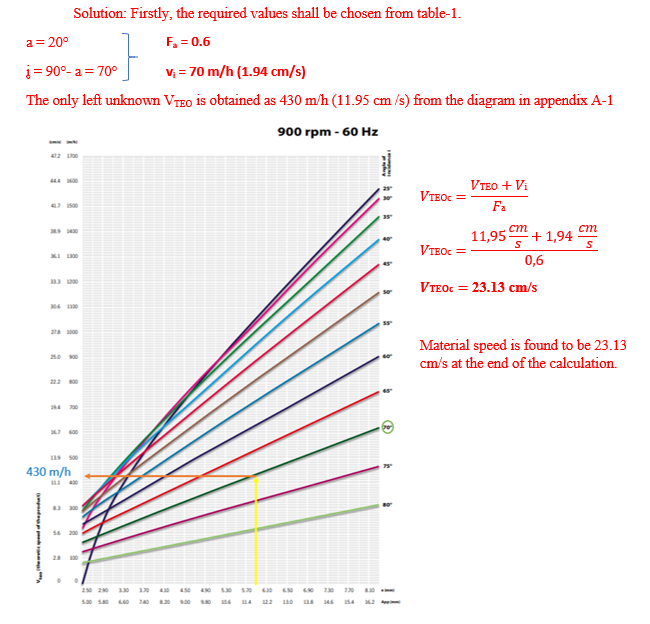
To calculate the bed depth of the material, the following formula is used. The allowable depth of bed should not exceed 5 times the wire cloth mesh when screening material weighing 1.6t/m³, or four times the wire mesh opening when screening material weighing 0.8t/m³.
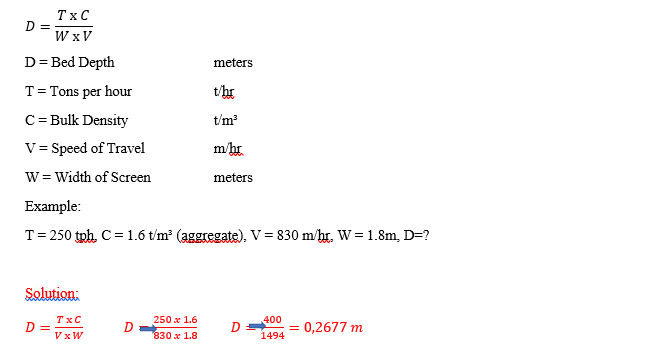
General Notes
- Bed depth calculations are recommended to determine the optimum width of the screen.
- If the bed depth is too deep, the material will not come into contact with the screen surface.
- The fine screening bed depth is very important, particularly when washing, to ensure the sprayed water penetrates the full depth of the material.
- The first one-third of the screen will allow 80% of the material to pass through. The balance is used to take the near size material to provide 95% efficiency.
- Sticky, Clay like material, UG 2, Gypsum require a high frequency linear horizontal to slightly inclined screen.
Finally, all of the parameters needed to calculate the flow rate of the material on screen has been obtained. Now, the flow rate can be easily calculated by formula defined below.
 Example: Calculate the flow rate with the values obtained at prior parts.
Example: Calculate the flow rate with the values obtained at prior parts.
All of these calculation steps are provided as an example, and all of the values used here are selected randomly. The same calculation step may be followed in calculations, or the sort of calculation may be changed, depend on exact values you have. All operations discussed here are invertible that’s mean, if the flow rate is already known, or if a specific flow rate is needed, the material velocity, vibromotor operating speed or the stroke of the system may be calculated easily in the same way.
2.3.2 Screening Area Calculation (VSMA Calculation Method)
The screening area is calculated by the formula defined below:

Qu is the amount (t/h) of undersize particles in the feed. Qspec is the specific screening capacity. S is the safety factor between 1–1.4 and depends on how well the screening material properties.
In mining operations where the material specifications, screen media opening dimensions and capacity are fully known, the S factor may be assumed as one.
Qspec = A x B x C x D x E x F x G x H x I x J x K x L
“A” is the basic capacity for the required separation in metric tons per hour per square meter of screen area. At Diagram - 3 & 4
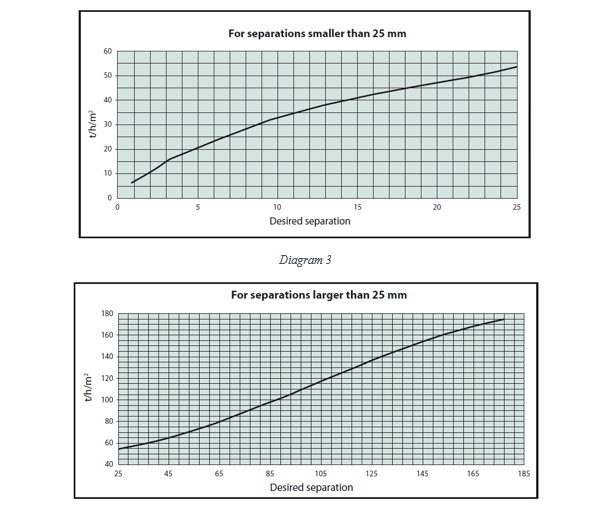
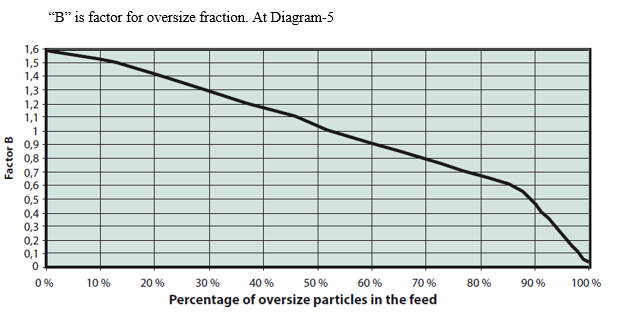
The “C” factor refers to the percentage of material in the feed smaller than half of the required separation size. At Diagram-6
